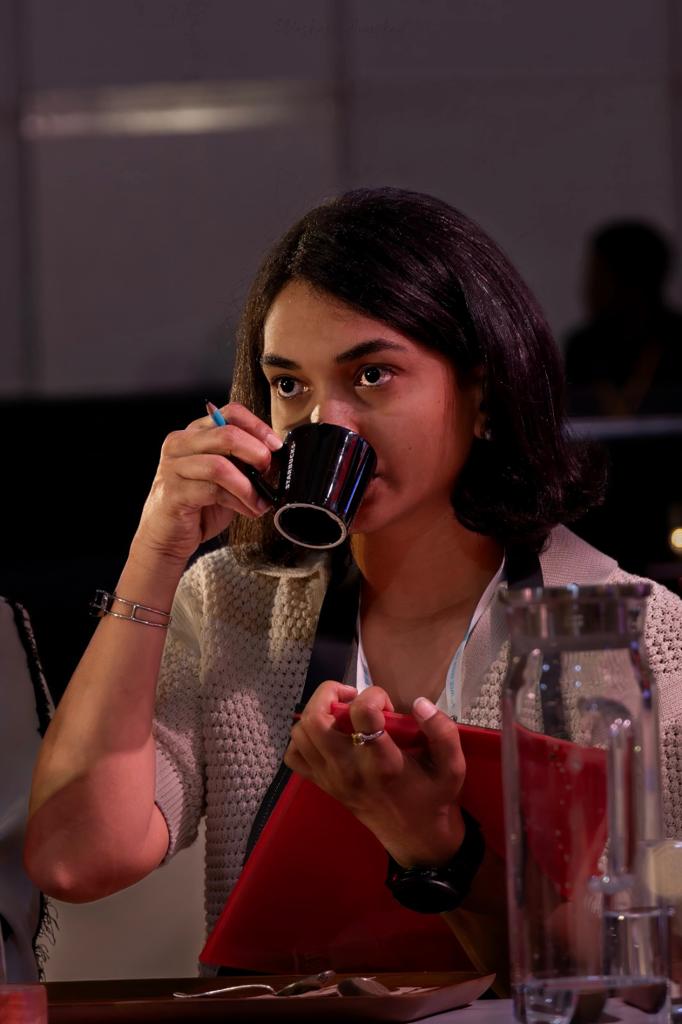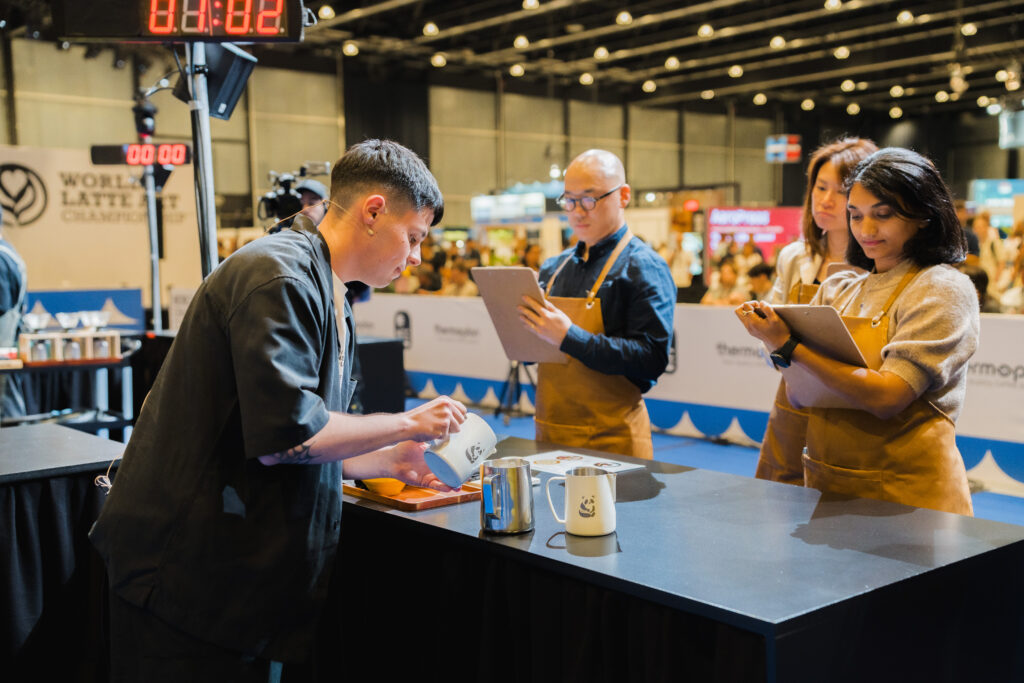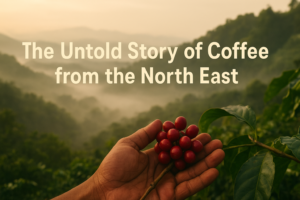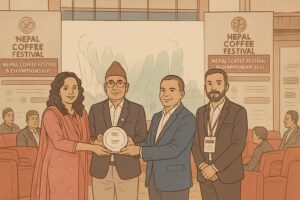“Success is about the journey of growth, resilience, and unwavering dedication to your dreams,” says Chandini D Purnesh, the renowned Indian judge at the World Latte Art 2024 in Denmark. With extensive experience in the coffee industry—from leading Harley Estate to founding a Coffee Processing Research Institute and promoting coffee eco-tourism—Chandini’s expertise is evident. She is also an Arabica Q Grader and plays active roles in key organizations such as the Women’s Coffee Alliance India, the Specialty Coffee Association of India, and the Karnataka Planters Association, where she fosters industry collaborations.

To highlight her extensive experience, I had an in-depth conversation with Chandini about her coffee journey, her role as a judge at the 2024 World Latte Art , the nuances of Indian coffee, and her aspiration to elevate Indian coffee on the global stage. Below is an excerpt from our conversation.
Q1. What does representing India at the World Coffee Championships mean to you personally and professionally?
It was an absolute honor to be the first Indian judge at the World Coffee Championships – Barista and Latte Art, held in Denmark this year, and to represent India. This milestone is more than just a personal achievement; it marks India’s growing influence in global coffee culture. By participating in such a prestigious event, we’re not only showcasing our skills but also helping to establish India as a serious contender in the coffee world.
Q2. How do you see your role as a judge influencing the perception of Indian coffee on the global stage?
As a judge at the 2024 World Latte Art, I had the opportunity to connect with global leaders in the coffee industry. It was a fantastic chance to share the story of the Indian coffee journey. This experience helped shine a spotlight on Indian coffee, positioning it as a serious player on the world stage.
Q3. What specific qualities or skills do you look for when judging barista and latte art competitions?
When judging barista and latte art competitions, I focus on several key qualities and skills. For latte art, I assess the quality of the design, pouring techniques, and overall creativity. It’s about blending technique with artistic flair to create visually stunning and well-executed designs.
In barista competitions, the criteria are more comprehensive. Technically, I evaluate factors like wastage, machine usage, extraction time, and overall efficiency. Sensory evaluation involves tasting the coffee to assess its quality, presentation, and balance, as well as noting service and hygiene. Both categories are judged on hospitality, including how effectively competitors present their stories and engage with the audience. These elements are crucial for evaluating their overall impact and professionalism.
Q4. Can you describe the judging process and the criteria used to evaluate competitors in the championships?
Each aspect of the competition is evaluated using a rating scale, with specific criteria tailored to different elements such as espresso crema, taste experience, and barista skills. Judges score each competitor based on these criteria, and all individual scores are then compiled and aggregated to determine the winners.
Q5. How do you think participating in such international events benefits the Indian coffee community?
Participating in international events like the World Coffee Championships offers a valuable platform to connect with global leaders, share insights about the Indian coffee scene, and learn from international practices. This exposure helps position India as an important player in the global coffee industry, enhancing recognition and appreciation for our contributions. Additionally, these interactions foster collaboration, open doors to new opportunities, and drive growth, elevating the global profile of Indian coffee.
Q6. What advice would you give to aspiring baristas and latte artists in India who wish to compete at international levels?
For aspiring baristas and latte artists in India who wish to compete internationally, my advice is to focus on:
- Mastering coffee-making basics.
- Getting creative with latte art.
- Staying updated on global trends.
- Seeking expert feedback.
- Entering local competitions.
- Building a strong network.
- Staying passionate and persistent.
Q7. What are your future plans and aspirations within the coffee industry, both in India and globally?
Indian coffee is shade-grown, sun-dried, and hand-picked, giving it a unique flavor that reflects its origins. I aim to raise awareness about its ecological and cultural significance and expand its presence in the global market. By enhancing our practices and striving to excel on the world stage, we can elevate India’s position on the global coffee map and showcase the unparalleled quality of our produce.

As Chandini continues to champion Indian coffee on the global stage, we wish her the very best in all her future endeavors. May her passion and perseverance lead to even greater achievements and inspire others in the industry.
Drop your questions in the comments, and Chandini will answer them personally!
Follow @curlybreww for #allthingscoffee







Which coffee from around the world is your personal favorite, and why?
I always find myself drawn back to Indian coffee for its unparalleled complexity, there’s something truly special about it. Indian coffee is like no other, grown amidst natural forests where the terrain demands everything to be done by hand. This careful hand-picking process and sun-drying to perfection create a flavour that tells a story, unique to each estate. In fact, even coffee from different blocks of the same large estate can vary in taste due to the intricate and beautiful ecological conditions. Beyond Indian coffee, I also have a deep appreciation for Sumatran and Panamanian coffees, each offering their own distinct and captivating profiles.
What do you think is lacking in the Indian coffee industry that prevents more coffee champions from emerging in global competitions?
I believe the main challenge for the Indian coffee industry in producing more global champions is the lack of exposure. While Indian coffee professionals have an incredible ability to adapt and innovate, historically, there’s been limited access to global trends, techniques, and training. However, this is rapidly changing as the industry evolves. We’re starting to see more opportunities for learning, collaboration, and international exchange, which are gradually helping Indian talent shine on the global stage. The passion and potential are there—it’s just a matter of time before we see even more Indian coffee champions making their mark.